Related Research Articles

"The Big Apple" is a nickname for New York City. It was first popularized in the 1920s by John J. Fitz Gerald, a sportswriter for the New York Morning Telegraph. Its popularity since the 1970s is due in part to a promotional campaign by the New York tourist authorities.

Tourism is travel for pleasure, and the commercial activity of providing and supporting such travel. UN Tourism defines tourism more generally, in terms which go "beyond the common perception of tourism as being limited to holiday activity only", as people "travelling to and staying in places outside their usual environment for not more than one consecutive year for leisure and not less than 24 hours, business and other purposes". Tourism can be domestic or international. International tourism has both incoming and outgoing implications on a country's balance of payments.

Times Square is a major commercial intersection, tourist destination, entertainment hub, and neighborhood in the Midtown Manhattan section of New York City. It is formed by the junction of Broadway, Seventh Avenue, and 42nd Street. Together with adjacent Duffy Square, Times Square is a bowtie-shaped plaza five blocks long between 42nd and 47th Streets.
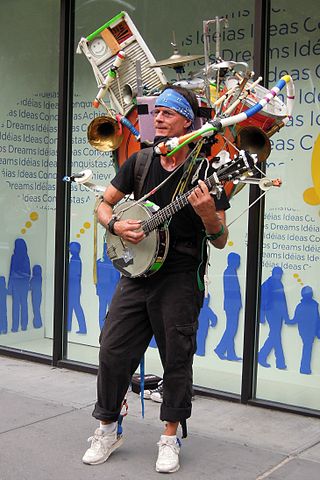
Street performance or busking is the act of performing in public places for gratuities. In many countries, the rewards are generally in the form of money but other gratuities such as food, drink or gifts may be given. Street performance is practiced all over the world and dates back to antiquity. People engaging in this practice are called street performers or buskers. Buskers is not a term generally used in American English.

Whale watching is the practice of observing whales and dolphins (cetaceans) in their natural habitat. Whale watching is mostly a recreational activity, but it can also serve scientific and/or educational purposes. A study prepared for International Fund for Animal Welfare in 2009 estimated that 13 million people went whale watching globally in 2008. Whale watching generates $2.1 billion per annum in tourism revenue worldwide, employing around 13,000 workers. The size and rapid growth of the industry has led to complex and continuing debates with the whaling industry about the best use of whales as a natural resource.

Abraham Michael Saperstein was the founder, owner and earliest coach of the Harlem Globetrotters. Saperstein was a leading figure in black basketball and baseball from the 1920s through the 1950s, primarily before those sports were racially integrated.

The Fête de la Musique, also known in English as Music Day, Make Music Day, or World Music Day, is an annual music celebration that takes place on 21 June. On Music Day, citizens and residents are urged to play music outside in their neighborhoods or in public spaces and parks. Free concerts are also organized, where musicians play for fun and not for payment.
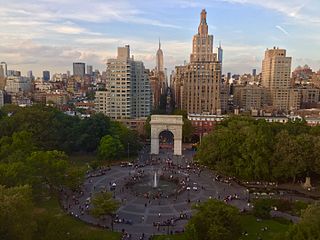
Washington Square Park is a 9.75-acre (3.95 ha) public park in the Greenwich Village neighborhood of Lower Manhattan, New York City. It is an icon as well as a meeting place and center for cultural activity. The park is operated by the New York City Department of Parks and Recreation.

Broad Channel is a neighborhood in the southern portion of the New York City borough of Queens. It occupies the southern portion of Rulers Bar Hassock, the only inhabited island in Jamaica Bay.
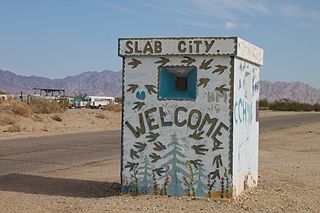
Slab City, also called The Slabs, is an unincorporated, off-the-grid alternative lifestyle community consisting largely of snowbirds in the Salton Trough area of the Sonoran Desert, in Imperial County, California. It took its name from concrete slabs that remained after the World War II Marine Corps Camp Dunlap training camp was torn down. Slab City is known for attracting people who want to live outside mainstream society.
The Big Apple Circus is a circus based in New York City. Opened in 1977, later becoming a nonprofit organization, it became a tourist attraction. The circus has been known for its community outreach programs, including Clown Care, as well as its humane treatment of animals. Big Apple Circus filed for Chapter 11 bankruptcy protection in November 2016 and exited bankruptcy in February 2017 after its assets were bought by Compass Partners. The Circus was renewed in October 2017 for its 40th anniversary season and returned to start a new season in October 2018 at Lincoln Center, receiving generally positive reviews.
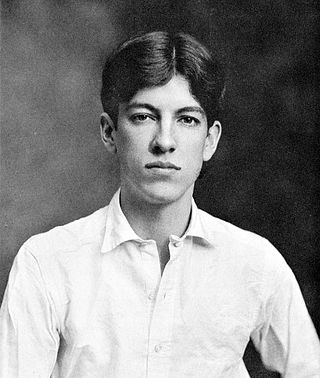
Alan Seeger was an American war poet who fought and died in World War I during the Battle of the Somme, serving in the French Foreign Legion. Seeger was the brother of Elizabeth Seeger, a children's author and educator, and Charles Seeger, a noted American pacifist and musicologist; he was also the uncle of folk musicians Pete Seeger, Peggy Seeger, and Mike Seeger. He is lauded for the poem "I Have a Rendezvous with Death", a favorite of President John F. Kennedy. A statue representing him is on the monument in the Place des États-Unis, Paris, honoring those American citizens who volunteered to fight for the Third French Republic while their country was still neutral and lost their lives during the war. Seeger is sometimes called the "American Rupert Brooke".

Food Yoga International, formally Food For Life Global, is a non-profit vegan food relief organization founded in 1995 to serve as the headquarters for Food Yoga International projects. Food Yoga International has its roots in ISKCON dating back to 1974. It is a completely independent non-profit organization that supports the work of Food Yoga International projects both inside and outside of ISKCON. Its network of 291 affiliates span the globe, with projects occupying over 65 countries. Volunteers provide over 1 million free meals daily. Food Yoga International engages in various sorts of hunger relief, including outreach to the homeless, provision for disadvantaged children throughout India, and provision for victims of natural disasters around the world.

Faʻaʻā is a commune in the suburbs of Papeʻete in French Polynesia, an overseas country of France in the Pacific Ocean. Faʻaʻā is located on the island of Tahiti, in the administrative subdivision of the Windward Islands, themselves part of the Society Islands. At the 2022 census Faʻaʻā had a population of 29,826, making it the most populous commune on Tahiti and in French Polynesia. Faʻaʻā has many mountains inland that can reach 1,500 m (5,000 ft). Mount Marau is an extinct volcano in the inland limits and can be seen from nearby Moʻorea. The area of Faʻaʻā is 9 m (30 ft) above mean sea level on average.
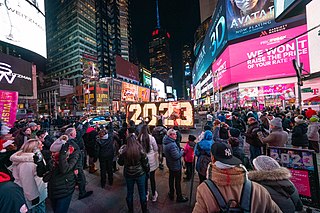
New York City received a ninth consecutive annual record of approximately 65.2 million tourists in 2018, the busiest tourist city attraction, and one of the world's overall busiest tourist attractions, counting not just overnight visitors but anyone visiting for the day from over 50 miles away, including commuters. Overall the city welcomed 37.9 million visitors who stayed overnight in 2018, of whom 13.6 million were international. Major destinations include the Empire State Building, Ellis Island, the Statue of Liberty on Liberty Island, Broadway theatre productions, Central Park, Times Square, Coney Island, the Financial District, museums, and sports stadiums. Other major visitor activities include luxury shopping along Fifth and Madison Avenues; entertainment events such as the Tribeca Film Festival; Randalls Island music festivals such as Governors Ball, Panorama and Electric Zoo; and free performances in Central Park at Summerstage and Delacorte Theater. Many New York City ethnic enclaves, such as Jackson Heights, Flushing, and Brighton Beach are major shopping destinations for first and second generation Americans.

Slum tourism, poverty tourism, ghetto tourism or trauma tourism is a type of tourism that involves visiting impoverished areas, or in some cases, areas that were affected by disasters, such as nuclear fallout zones like Chernobyl or Fukushima. Originally focused on the slums and ghettos of London and Manhattan in the 19th century, slum tourism is now prominent in South Africa, India, Brazil, Kenya, and the Philippines.
Tourism Concern was a British NGO, advocating ethical tourism through campaigning and educating the tourism industry and travelling public. It closed in September 2018. Its members and staff worked to highlight global tourism's negative impacts and potential solutions, believing that host communities should truly benefit, not suffer, from tourism development. Its web and print archives held by Warwick University document the scope of its work over thirty years. Stated aims were 'to increase understanding of the impact of tourism on environments and host communities among governments, industry, civil society and tourists; and to promote tourism development that is sustainable, just and participatory, and which is founded on a respect for human rights.'
A comic book convention or comic con is a fan convention emphasizing comic books and comic book culture, in which comic book fans gather to meet creators, experts, and each other. Commonly, comic conventions are multi-day events hosted at convention centers, hotels, or college campuses. They feature a wide variety of activities and panels, with a larger number of attendees participating with cosplay than for most other types of fan conventions. Comic book conventions are also used as a method by which publishers, distributors, and retailers represent their comic-related releases. Comic book conventions may be considered derivatives of science-fiction conventions, which began during the late 1930s.

Overtourism is congestion or overcrowding from an excess of tourists, resulting in conflicts with locals. The World Tourism Organization defines overtourism as "the impact of tourism on a destination, or parts thereof, that excessively influences perceived quality of life of citizens and/or quality of visitor experiences in a negative way". This definition shows how overtourism can be observed both among locals, who view tourism as a disruptive factor that increasingly burdens daily life, as well as visitors, who may regard high numbers of tourists as a nuisance.

The Calgary White Hat is a white felt cowboy hat which is the symbol of both the Calgary Stampede annual rodeo and the city of Calgary. Created by Morris Shumiatcher, owner of Smithbilt Hat Company, it was worn for the first time at the 1946 Stampede. In the early 1950s, Mayor of Calgary Donald Hugh Mackay began presenting the white hat to visiting dignitaries, a tradition that the mayor's office continues to this day. Thousands of tourists and groups also participate in "white hatting ceremonies" conducted by Tourism Calgary and by volunteer greeters at the Calgary International Airport. In 1983, the Calgary White Hat was incorporated into the design of the flag of Calgary.
References
- ↑ Allen, Anne Wallace (August 1, 2010). "Volunteers give free tours in cities around the world". USA Today.
- ↑ Levy, Clifford J. (September 13, 1992). "Take My Hand, I'm a Stranger in Pandemonium". New York Times.